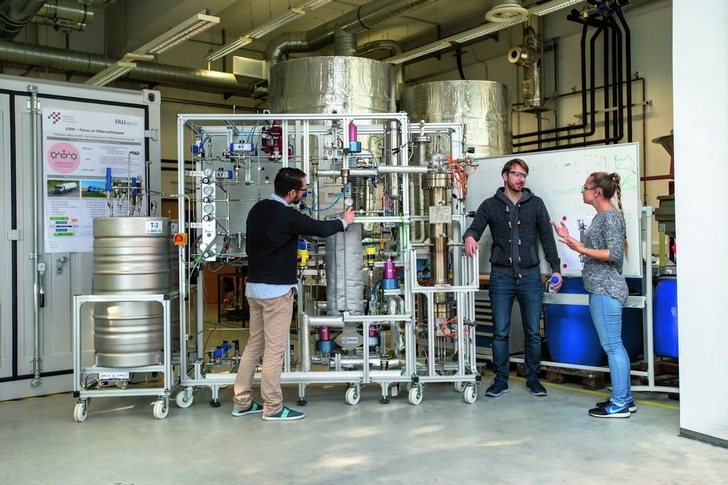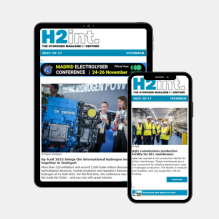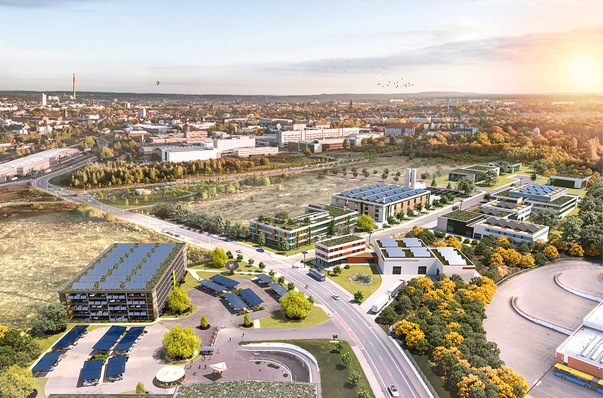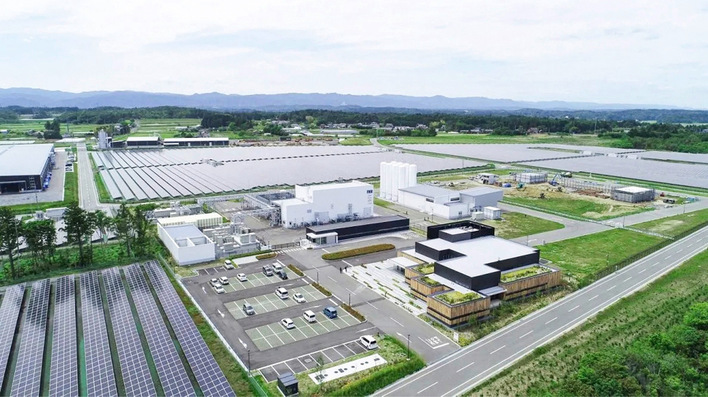Hydrogen in various forms will play an important role in future energy supply. Green hydrogen, produced from renewable electrical energy, holds a number of advantages over the direct use of electricity in many use cases. Moreover, hydrogen will replace, either directly or in a processed form, fossil fuels like coal, crude oil and natural gas in numerous processes. Hydrogen is therefore an important complementary technological component that is necessary for realizing a sustainable energy transition.
As the European Metropolitan Region of Nuremberg or EMN will also be affected by this fundamental change, locals are concerned with being as well prepared as possible for the emergent hydrogen economy so as to reach both sustainability and economic targets.
EMN’s hydrogen potential
The study was carried out by the Energie Campus Nürnberg in collaboration with other project partners, such as the Friedrich-Alexander-Universität Erlangen-Nürnberg (FAU) and Nuremberg Tech. It focuses exclusively on green hydrogen, with the authors pursuing three key objectives: Firstly, they wanted to establish what potential exists and which value chains are present in the region. They also wanted to investigate which business models could be created. The intension was also to make a comparison with other metropolitan regions. In addition, they aimed to explore the provenance of green hydrogen and where it could be deployed.
EMN as a technology exporter
Dr. Sebastian Kolb, who leads the Energy Systems and Energy Economics research group at the Energy Process Engineering section at FAU, explains: “There is a broad base of small- and medium-size enterprises as well as industrial companies in the region. Today, many of these are already involved in the hydrogen economy. Others contribute skills which can be utilized extremely well in the hydrogen field. Additionally, EMN has strong expertise in hydrogen-oriented industrial research and pure science. Network structures are also in place. The primary opportunity for the area exists not so much in the role of producer or user but in the export of key hydrogen technologies.”
One crucial challenge which has been cited is that hydrogen has had limited presence as an energy carrier in the metropolitan region so far. Application potential is said to be low, with few large industrial consumers of hydrogen.
Current situation and future perspectives
Important sections in the study are the description of the current situation, an analysis of the potential, including application and production, simulations and harnessing opportunities. The study’s authors have identified the paper and glass industry, iron foundries, nonferrous metal foundries and the mobility sector as potential users of green hydrogen in EMN.
The Nuremberg climate protection plan forecasts that the mobility and logistics sector will account for 18 percent of total energy consumption in 2030. The study focuses particularly on heavy-duty vehicles with fuel cells as a use for hydrogen in the mobility and logistics sector. The scenarios assume that hydrogen will only be required for this mode of transport, but include the much lower demand of other means of transportation. The result is that heavy-duty vehicles have the greatest potential for using hydrogen-based propulsion systems in EMN. By 2030, 10 percent of all heavy-duty vehicles could have a hydrogen power system. This proportion could increase to 20 percent by 2050. By contrast, hydrogen technology plays virtually no role in rail, aviation and shipping in EMN, according to the study’s findings.

Fig. 2: Trajectories for “Basic” and “Optimistic” scenarios in relation to reference year 2015
Findings and recommended action
In its concluding section, the study outlines recommended courses of action which are divided into three categories:
- The development of renewable energies must be greatly accelerated, for example by making photovoltaics obligatory on buildings or by subsidizing resident-owned wind turbines.
- Cross-sector research must be supported for key hydrogen technologies. This is expected to improve networking and contact points for hydrogen. Cluster funding is also needed.
- A suitable supply structure should be created – despite the hitherto low level of production and demand. This could be coordinated, for instance, by a central point of contact for suppliers and off-takers. “Further specific details are required here: Where will the demand for hydrogen originate? In what form will it be needed? Where is the hydrogen in EMN to be produced?” says Kolb.
What’s more: “Application and production are secondary when it comes to the future role of hydrogen in the region. The small application potential that has been identified is primarily focused on the supply of process heat.” Production is advisable where the infrastructure is already in place, he continues, for example in areas close to wind farms or on the site of power plants.
“The Nuremberg metropolitan region will not be an exporter or large consumer of hydrogen, however, it can provide essential know-how and key technologies for the hydrogen economy. Nevertheless, there will also be consumers in the EMN that rely on hydrogen – particularly for the production of process heat. For these, a suitable supply infrastructure will be needed in the region,” states Kolb.
As for application potential, it is said to be unlikely that industries with a substantial need for hydrogen will locate themselves in the area because of the complexities involved in importing hydrogen via the appropriate infrastructure. Hydrogen can also be used in the metropolitan region for the long-term storage of electricity.
According to the report, EMN can become an innovation center for the development, manufacture, distribution and export of specific key hydrogen technologies. It states that compared with the other metropolitan regions, EMN has a high rate of companies associated with hydrogen technology relocating to the area.
Author: Anette Weingärtner






